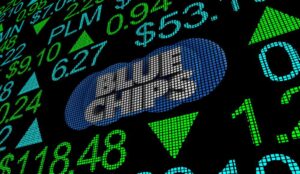At time of writing, the share prices of CSL Ltd [ASX:CSL] and Commonwealth Bank of Australia [ASX:CBA] are up .82% and 2.03% respectively. CSL shares are up nearly 70% and CBA shares are up more than 17% over the last 12 months…
Dividend Stocks: Maximising Income with Reliable Investment Picks
Some investors trade shares for capital gains while others seek a steady income from their investments by focusing stocks that pay out dividends.
Companies that have a history of paying regular, and increasing, dividends are viewed favourably among this type of investor.
Unless corporate managers can oversee sharply higher real earnings growth, dividends remain one of the main sources of the real return we expect from stocks.
But what are dividends and how do investors go about finding the best dividend stocks? Find out below.
What are Dividends?
Dividends are slices of a company’s profits shared with its stockholders. Instead of retaining or reinvesting its profit, a company may instead choose to dole out some of it to shareholders.
Why are dividends attractive for investors?
If you were buying a business, you’re likely to be more interested in one that’s making a profit than one running at a loss. Well, retail and institutional investors are no different. They’re on the hunt for profitable companies that pay them an income.
Companies pay this income via dividends.
Typically, a blue-chip stock pays out two dividends a year. The more profit a company makes, the bigger the size of the dividends it can distribute to its shareholders.
Latest Updates on Top Dividend Stocks on the ASX
Companies growing quickly might generate some short-term profits if you want to trade in and out of them. However, they need to keep a tight hold on their cash to help fund their businesses.
Pick the wrong stock and you’ll not only miss out on dividends, but potentially lose money on the trade as well.
Mature businesses, like bank stocks, are already well established and can share more of their profits with their shareholders. You’ll often hear this referred to as yield investing.
Investors look at how much income they’ll make from dividends, given the size of their investment.
Another attraction of dividend-paying stocks is the stability of the companies that pay them. The most reliable dividend payers are usually the largest companies on the ASX.
What’s less known, though, is that most of the companies listed on the ASX don’t pay dividends. They just don’t have the financial firepower to pay them.
Investing in dividend-paying stocks might not be the most exciting way to play the market. However, it can be an excellent way to build both wealth and income over time.
The Financial Times Guide to Investing for Income, for instance, cited evidence that a strategy of buying the ‘right kind of dividend payers (progressive dividend payers with a decent balance sheet) will actually delivers better returns in and of itself.’
The authors mention that the market itself ‘tends to prioritise the attractions of certain dividend payers and awards their shares a premium rating.’
High Dividend Stocks on the ASX
When we talk about high dividend stocks, we usually refer to stocks with a solid dividend yield.
A dividend yield is the percent rate of return provided by a stock’s dividend payments.
Essentially, the yield is the annual dividend per share, presented as a percentage of the share price.
It can be tempting to simply pick ASX stocks with the highest dividend yield but that can be a dividend trap.
For instance, take Scentre Group. In 2020, it was trading on a historical yield of 10% – seemingly a handsome return – before it announced it won’t be paying its August 2020 distribution.
A high yield may tell you the market doesn’t believe the company’s earnings are sustainable. A yield that is way above average is often a warning sign, not an attraction.
A high yield could also suggest a recent drop in a company’s share price. The reason for the share price fall could be a sign the market is doubtful the company can maintain its current dividend level.
Let’s say a company’s share price drops from $20 to $10 while the average of its paid and projected annual dividends is 75 cents per share.
When the share price was $20, the yield was 3.75% (0.75 ÷ 20 x 100 = 3.75).
But when the shares dropped to $10, the yield changed to 7.5% (0.75 ÷ 10 x 100 = 7.5), provided the annual dividends remained unchanged.
It also pays to check the company’s debt ratio. You want dividend stocks that can cover not only their dividends but also their debt.
So, a high yield is not informative on its own – you need to seek out context.
Has the share price recently plummeted? Does the company have the cash reserves to pay out the dividends? Can its free cash flow cover the dividend payout? Can its earnings?
Researching these questions will make you a better dividend investor.
Don’t forget, too, that the dividend yield is only part of the return on a stock investment.
Focusing exclusively on dividend yield ignores prospective capital gains (stock price increases) or losses.
For instance, low-dividend stocks can presumably offer greater prospects for capital gains, otherwise investors would not be willing to invest in them.
Additionally, you must remember that stocks with attractive yields are not term deposits or government bonds. The latter are safer asset classes.
Why? Companies that pay dividends may slash or cancel them at any time, even if they have a long history of paying out dividends.
Further, even when a stock can maintain its dividends, its share price may decline and you can incur a net capital loss.
Best ASX Dividend Stocks
One way to identify the ‘best’ dividend stocks is by seeking out what the industry calls dividend aristocrats.
Dividend aristocrats are a highly selective set of stocks distinguished by their ability to increase their dividends every year for at least 25 years.
As would be expected, the bigger and older the stock exchange, the greater the number of dividend aristocrats.
In the US, some of the stocks counted as aristocrats include the steel producer Nucor and the oil and gas explorer Exxon Mobil.
Australia doesn’t have as many dividend stocks with such royal blood but some come close.
There are Australian stocks that have managed to at least maintain, if not increase, their dividends over a long period of time.
One such stock is Brickworks. BKW has at least maintained, and often increased, its dividend every year since 1976 .
Another is Washington H Soul Pattinson. As WHSP’s chairman Robert Miller pronounced to the market in 2021, ‘we’ve never missed a dividend since we listed in 1903 .’
Finally, there is also APA Group, which has maintained or raised its dividend every year since 2003 .
Finally, the following sectors are known have stocks that can maintain regular dividend payments:
- Basic materials
- Oil and gas
- Banks and financial
- Healthcare and pharmaceuticals
- Utilities.
Upcoming Dividends on the ASX
Dividends are usually announced to the market four to six weeks before the ex-dividend date.
Market Index – the online publisher of Australian stock market information – records the upcoming dividends for ASX stocks.
The list of upcoming dividends can be accessed here.
The ex-dividend date occurs one business day before the company's record date.
To be entitled to a dividend, a shareholder must have purchased the shares before the ex-dividend date.
If you purchase shares on or after that date, the previous owner of the shares – and not you – is entitled to the dividend.
In other words, to receive a dividend, you must purchase a stock before the ex-dividend date.

Suncorp Share Price Reflects Death of Banks, Not Disasters (ASX: SUN)
By Lachlann Tierney,
At time of writing, the share price of Suncorp Group Ltd [ASX:SUN] is down 3.28%, trading at $12.10. The Suncorp share price reflects the death of banking, not the immediate pain caused by disasters to the company’s bottom line…
- « Go to Previous Page
- Page 1
- Interim pages omitted …
- Page 14
- Page 15
- Page 16
